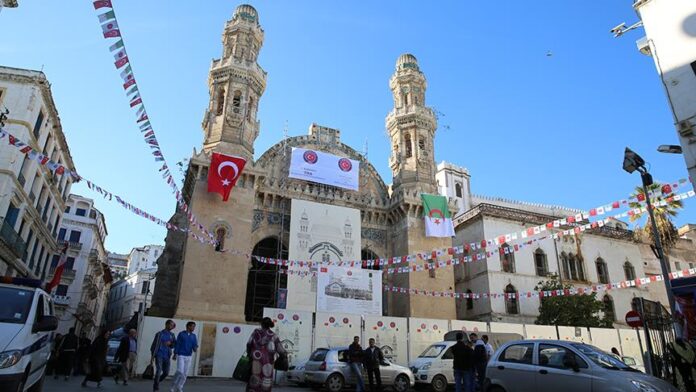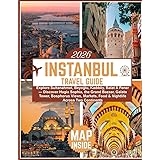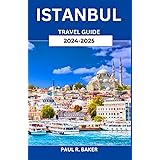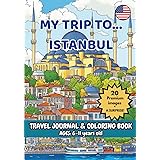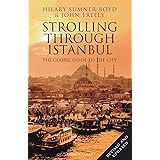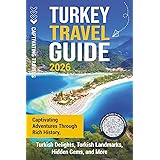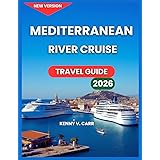by Prof Dr Süleyman Kızıltoprak, 27.02.2018
When we consider Algeria, one of the important countries of the Mediterranean, historically, it would not be an exaggeration to say that it is a part of us. After the destruction of Andalusia, the existence of Muslims was preserved by preserving the Ottoman State, which was the help of Muslims who were forcibly converted to Christianity, with the blood of deceased Turkish soldiers who were martyred in Algeria.
The tomb of Oruç Reis, who fought hand to hand with the Spaniards for this cause, is still unknown. Algeria, which was the Ottoman Governor with the price paid, turned into a safe country for years under the rule of Barbaros Hayreddin Pasha.
If Spain had been successful in invading North Africa starting from Algeria, there was a strong possibility that it would do in this region what it did in South America. However, Algeria remained under Ottoman patronage for three hundred years.It has both preserved its existence and succeeded in laying the foundation of today’s administrative tradition.
The Ottoman Empire’s relationship with the North African countries began during the destruction of Andalusia. This expansion, which the Spaniards called Reconquisita (reconquest), acting to make the region Christian again, opened the doors of a new era for Africa.
Far from the old world, the vast Inca and Maya civilizations fell into the hands of the Europeans in a short time; Why did the many weak states of North Africa, which are in many ways closer to each other with Europe, troubled the European colonial powers for so long? The states that were active in North Africa were more than capable of repelling attacks from outside in the Middle Ages. Great states such as the Umayyads (661-750), the Abbasids (750-1258), the Almoravids (1049-1145) and the Almohad (1146-1248) and even some small dynasties were on the offensive, not on the defensive, against the attackers in the name of Christianity. But, at the end of the XIV. century, the Muslim world of North Africa lost its power just like Spain, and when it was divided into three nominally weak states, not one of them was as strong as Granada.In fact, in most of these countries there was a tribal anarchy and internal conflict. The European powers, through Spain and Portugal, began to carry the literally Crusader-spirited war to Africa. on behalf of Portugal. John (1481-1495) and Isabella on behalf of Spain (1451-1504) were not satisfied with dividing the unexplored lands of the new world, so they agreed on the map to invade Africa, the closer place.1 .
Portuguese sailors, aiming to find the beginning of the Spice Route and to transport precious metals from new lands to their countries, established bases and warehouses at the mouth of the Zambezi river in East Africa, on the coast of Angola in West Africa, the Gulf of Guinea, Sierra Leone and Senegal. Around the same time, the Spaniards advanced along the southern coast of the Mediterranean. The entire coast, up to Algiers, Tunis and Tripoli, was either in the hands of the Spaniards or their superiority was recognized. The fate of weak and helpless Muslim North Africa looked like a quick submission.
There are two reasons why North Africa’s fortunes changed. The first is that the balances in Morocco are settled. In the second half of the XV th. century, while the struggle for dominance continued in Morocco, on the other hand, the necessity of resisting the Portuguese attacks emerged. Sa’dis who captured Merakesh in 1524 dealt a great blow to the Vattasis (1472-1550). Morocco under the rule of the Sa’di dynasty (1509-1627) both strengthened and successfully repelled the attacks of Spain and Portugal in its own sovereignty. The second and most important is the Turkish appearance in Algeria and the Mediterranean. At the end of the Spanish-Ottoman influence struggle in the Western Mediterranean, Algeria, Tunisia and Tripoli came under Turkish domination 2 .
_.jpg)
The bombardment of the city of Algiers by the French army in 1829
Ottoman Period in Algeria
The seizure of Mersâ el-Kebir in 1505, Vehran (Oran) in 1509 and Bicaye in 1510 on the Algerian sides of Spain also threatened the interests of the Ottoman Empire in the Mediterranean. In the face of the Spanish attempt to completely occupy North Africa, the famous Turkish sailors Oruç Reis and Hızır Reis, who were engaged in piracy activities in the Aegean and Mediterranean at that time, turned to the goal of establishing Turkish dominance in these regions. First, in 1516, they annexed the city of Algiers to the Ottoman lands. After the arrival of the Turks in the region, the Christian advance stopped. Thus, Muslims in Africa found a protector for themselves. The Ottomans successfully repelled the Crusader raids from Europe 3 .
The Barbaros brothers, who came under the patronage of Yavuz Sultan Selim, settled on the island of Cerbe. When the notables of Algeria sought help against the Spaniards, they captured the city of Algiers and Sherchel (Cesaree) to its west in 1516. Oruç Reis, who was declared the Sultan of Şersel and Algeria, lost his life in the war he fought against the Spaniards who wanted to retake Tilimsân in 1518, after the capture of Tenes and Tilimsân. Hizir Reis, who succeeded Oruç Reis, sent Hacı Hüseyin to Yavuz Sultan Selim in October 1519 and asked for help. Sultan Selim, nicknamed “Hayreddin”, declared Hızır as the ruler of Algeria. He also sent a 2,000-strong military unit of janissaries and artillery, along with war materials and ship’s supplies. Algeria’He gave the janissary privilege to those who would go to e voluntarily and the permission to enlist as many soldiers as necessary from Anatolia. In this way, Algeria, where the sermon was started to be read in the name of the sultan, came under Ottoman influence. In 1530, Hızır Reis captured a small island under Spanish control and Penon Castle (Adakale) in front of the city of Algeria. He built a very sheltered harbor here.
With the collapse of the Almohad State in 1248, the notion of ‘single state’, forgotten by the people of the region, came back to life with the entry of the Turks into the region. In this context, this political structure established in the time of Barbaros Hayreddin Pasha almost coincides with the geography of the Algerian State today. In fact, it is seen that the borders of the modern Algerian State were drawn by Barbaros Hayreddin Pasha 4 .

The city of Algiers in 1830
The Asylum of Andalusian Muslims in the Ottoman Empire and Their Settlement in North Africa
The Ottoman Empire, since the end of the in the XV century, just as Turkey hosted around 4 million refugees fleeing the civil war in Syria and tried to settle them in safe areas, it protected the Spanish Muslims who were subjected to forced conversion and forced migration 5 . In Spain, the forced baptism of Muslims intensified by the order of the King, which was issued between 1500 and 1524.
Moriscos are Andalusians who accepted Christianity under the pressure of the Spaniards with Crusader ideology before and after the collapse of the Andalusian State in 1492, but secretly tried to protect their Muslim identity. The “Morisco migration”, which has an important place among the great exiles in world history, caused new developments in North Africa and the Western Mediterranean 6 . XVI.-XVII. Algiers, a powerful Ottoman province in the Western Mediterranean for centuries, helped the Moriscos and ensured their safe settlement in North African lands. On the other hand, new cities and towns were established as a result of the forced migration of Moriscos to settle in different parts of Algeria. Moriscos, both with their qualified population and agricultural,contribute to the development of the Algerian economy, with industrial and commercial experience sağladıl to 7. The inclusion of Moriscos in Algerian society as a new social element, together with the Turks, is one of the successful population policies of the Ottoman Empire 8 .
First of all, Barbarossa carried 70,000 of the Andalusian Muslims, who were subjected to a great genocide in Spain, to Algeria by organizing seven voyages with a fleet of 36 ships. Both Barbarossa and the Ottoman Empire gained great prestige in the eyes of the Andalusians and the Muslim Algerian people whose lives were saved 9 .
In the last Morisco migration from Spain to North Africa between 1609 and 1614, around 80 thousand immigrants were settled in Tunisia. Thus, the migration movement of Moriscos, whose number is approximately 500 thousand, to North Africa was completed 10 .

Suleiman the Magnificent and Barbarossa’s Algeria
Suleiman the Magnificent appointed Barbaros to the head of the Ottoman navy as the governor of Algeria. Thus, direct 1534’t Algeria became an Ottoman Beylerbeyliğine 11. Algeria became even richer with the booty captured during the Barbaros era. Although Barbarossa captured Tunis in 1534 in his first campaign with the Ottoman navy, he had to retreat due to the navy sent by Emperor Karl V (Charlemagne) and the rebellion of the locals. But by 1536, he had strengthened his authority by capturing most of the cities of Sahil and Tel region. By defeating the Crusader fleet under Andrea Doria’s command in Preveza in 1538, he showed his real power and that he was a great commander. With this victory, he ensured Ottoman supremacy in the Central Mediterranean. The Spanish navy under the command of Emperor Charles V, who counterattacked, suffered another major defeat in 1541. After the death of Barbaros in 1546, the governors who took charge managed to keep all Algeria under their control, except Vehran.During the reign of Hüseyin and Kılıç Ali Pashas, progress was made to the center of Morocco. In addition, although the Spaniards helped the Hafsi State, the entire province of Constantine was under Turkish rule.12 .
The Ottoman Empire made efforts to establish sovereignty over Tripoli in the years 1510-1551 during the wars with the Spaniards. As a matter of fact, Tripoli, which was in the hands of the Spanish, became dependent on the Ottoman State in 1551. The Spaniards also struggled to seize Tunisia; At the end of these struggles, the Ottomans were successful and Tunisia was annexed to the Ottoman Empire in 1574. The Ottoman Empire’s inclusion of Algeria, Tunisia and Tripoli and the improvement of its relations with Morocco; It resulted in the Ottomans being neighbors with Black Africa and establishing relations with tribes and states in the Great Sahara.

Hüseyin Pasha, the last Dayi of Algeria
Changing Balances in the Ottoman Algeria in XVIII. and XIX. Centuries
The wars that the Ottoman Empire started to lose one after the other since the second half of the XVIII century made it necessary to act with new parameters both in domestic and foreign policy. The Ottoman Empire’s first contact with other Muslim communities is the result of Abdulhamid I’s persistent search for solidarity. In 1770, the Russians crossing the Strait of Gibraltar and burning the Ottoman fleet in Çeşme caused the Ottoman Empire to reevaluate the threats that could come from the Mediterranean. In this context, the Ottoman Empire sent envoys to both Spain and Morocco in order to prevent a new danger to itself by passing through the Strait of Gibraltar. In addition, the Ottoman Sultan Abdulhamid I, with the third article of the 1774 Küçük Kaynarca Treaty, made the CrimeaHe became the caliph, that is, the religious leader of the Muslims. This article was a documented principle of the new foreign policy to be followed by the Ottoman Empire and the main purpose was; was to maintain his spiritual authority in the lands where he lost his political authority. Thus, the caliphate began to be seen and used as a political authority over Muslim communities.13 .
Algeria, which was under Turkish rule until 1830, had an autonomous administration in North Africa called the Western Hearths. Algeria was the most controllable province in terms of the centre. The Beylerbeyi or the governor at its head was subject to the sultan, but he could act autonomously 14 .
The number of Algerian quarries had a military structure that did not exceed 20,000. Most of the soldiers here were sailors from the maritime class of peasants who were brought from Anatolian coasts such as Aydın, İzmir, Manisa, Muğla and even from places such as Sivas and Diyarbakır in case of need. After they were registered in the hearth, they were assigned on land or on ships, and they could rise up to the squire 15 .
Algeria had the largest navy among the Western heartlands. However, the basis of the military class was the janissaries sent from Istanbul. At the head of the Janissaries was an agha as a commander . Also from Turks and mehâzinThere were cavalry units from the indigenous tribes called As ready-made soldiers, they performed duties such as guarding the caravans, helping with the collection of taxes, and controlling the tribes. Most of the state’s revenues came from piracy, a form of maritime activity. The sailors who went out of the Mediterranean were doing piracy activities in an area extending from the Strait of Gibraltar to the Canary Islands, England, Ireland, Netherlands, Denmark, and even the island of Iceland. France, which had a trade agreement with the Ottoman Empire, had to make a separate agreement with her Algerian uncle in 1629 for the security of maritime trade. England and the Netherlands signed a similar treaty with Algeria in 1636. In the face of the strengthening of the French and English navies towards the second half of the XVIII.th century, the balances in the Mediterranean began to change. As the piracy activity of Algerians decreased, there were great losses in revenues. As the economy contracted, the population in Algeria began to decline. As a result, In the second half of the XVIII.th century, the navy was forced to shrink. The number of Janissaries was also reduced, down to 5,000. The dramatic decline in shipping revenues resulted in increased taxes. Naturally, the reaction of the people, whose economic resources were depleted, increased and rebellions arose. Half of the twenty-eight uncles who came to power after 1671 were overthrown and murdered by the people and the soldiers.The dramatic decline in shipping revenues resulted in increased taxes. Naturally, the reaction of the people, whose economic resources were depleted, increased and rebellions arose. Half of the twenty-eight uncles who came to power after 1671 were overthrown and murdered by the people and the soldiers.The dramatic decline in shipping revenues resulted in increased taxes. Naturally, the reaction of the people, whose economic resources were depleted, increased and rebellions arose. Half of the twenty-eight uncles who came to power after 1671 were overthrown and murdered by the people and the soldiers.16 .
When Napoleon invaded Egypt in 1798, Algeria also declared war on France. Algerian forces then occupied the French-owned Bastion trading post near Annabe. It was given to the French in 1578 on the terms of fishing coral, paying taxes and not building castles. The French commercial center was only restored in 1817. While Algeria lost its importance in maritime, the British began to establish superiority in the Mediterranean. The British defeated the French, whom they first defeated in the naval battle of Abukir with the Ottoman alliance, for the second time in the naval battle of Trafalgar in 1805. At the Congress of Vienna in 1815, it was decided to abolish piracy at sea. In 1816, the European states under the leadership of England sent a navy to Algeria under the command of Lord Exmont. The city of Algiers was shelled, its ships were sunk.Thereupon, his uncle in Algeria had to make an agreement with England and the Netherlands.17 .

Fan/Tokat Incident and French Occupation in Algeria
The Algerian uncle, Huseyin Pasha from Izmir, became the leading actor in what is known as the “fan incident” or “slap incident”, which was used as a pretext for the invasion of France. The French government had borrowed 5 million francs and some grain from two Algerian Jewish merchants, Bacri and Busnak. When France came under the imperial administration, he stopped the payment of this debt. Algerian Uncle Hüseyin Pasha seized some French ships to claim the rights of these merchants. In this way, the actual tension between the two sides began. Due to the Ramadan holiday, Uncle Hüseyin Pasha gave an invitation in his own palace on April 28, 1827. Meanwhile, he had an argument with the French consul, Pierre Deval, over France’s debts.Since Hüseyin Pasha Deval was not interested in the issue, when he hit him in the face with the fan in his hand, the relations between France and Algeria, which was considered an insult by slapping him, were cut off. By starting the planned operation, France declared war on Algeria on 16 June 1827 and blocked the Algerian coast with a large navy.18 . At that time, the Porte, who was dealing with the Greek revolt, sent Tahir Pasha to the French side as a mediator at the request of England. The French seized Tahir Pasha’s ship and took him to Toulon. The Sublime Porte thought that Algeria was strong enough to fight alone against the French, and did not want to actually get involved in the war. In fact, there was no possibility of sending forces to Algeria. On October 20, 1827, the joint British, French and Russian fleets burned the Ottoman fleet in Navarin 19 .
This situation in Algeria could offer a solution for France, which is struggling with internal problems, such as controlling its society and integrating it in line with an external goal. So much so, that the Ottoman Empire lost the war with Russia in 1828-1829, and the reasons such as the Greek rebellions made Algeria an easy morsel for France. France, which had regressed on land and sea against England, could again show its strength by seizing Algeria. Thus, as he would have a colony, he would be able to gain superiority in the Mediterranean against England and take a larger share from the Mediterranean trade. 3 years the French have hesitated before sending an army to occupy the final 20. By 1830, the French government, experiencing a serious internal depression, was looking for a new opportunity to divert public attention to the outside. The social and economic crisis caused by unemployment benefited the opposition the most. The government, on the other hand, aimed to silence the opposition by giving “land” to France 21 .
The French sent a large navy and a force of 37,000 men to Algiers on 14 June 1830 under the command of General Bourmont. On July 5, 1830, they occupied the city of Algiers. The first thing the French did was to drive the Turks out of the country 22 . Their aim was to easily control Algeria. Seize the whole of Algeria, Constantine Bey and Haci Ahmet Emir Abdülkâdir surrender after the defeat of the insurgents in control in 1847 lasted 10 years, until 23 . When the above-mentioned negative conditions were added to the fact that Mehmet Ali Pasha rebelled and defeated the Ottoman army in Egypt, the Sublime Porte could not intervene by sending soldiers to the French occupation in Algeria. However, he supported the resistance movement in Algeria through the press.

Keçiova Mosque, Symbol of Resistance, was restored by TIKA
Keçiova Mosque, which was re-expanded in 1792 by Algerian Gazi Hasan Pasha, whose foundation dates back to 1436 but made an agreement to collect taxes from US ships, became the symbol of the resistance against the French occupation in 1830. When France did not refrain from slaughtering the people who gathered against the resistance and took shelter in the mosque, the name of the square became the square of doubt. Despite all the reactions of the Algerians, the mosque that was converted into a cathedral was turned into a mosque about 130 years later, when Algeria gained independence in 1962. This holy place was damaged by the earthquake in 2003 and had to be closed to worship in 2008, and was reopened for worship in 2013 by TIKA upon the instruction of President Recep Tayyip Erdoğan after a long-lasting restoration.

Conclusion
With the occupation of Algeria, the colonial rivalry in Africa entered a new phase. When the French army landed near Sidi Ferruc, near Algiers, on June 14, 1830, other European powers again competed to invade North Africa, claiming to be the true heirs of the Roman Empire. But this process was very difficult and had to progress slowly. It was much more challenging as well as slower than the progress of the Arabs 1200 years ago. The first step, the subjugation of Algeria, took more than a quarter of a century. The final steps, namely the partition of Morocco and the occupation of Tripoli, took many years. In the nearly 80-year period between 1830 and 1911, the whole of North Africa was once more under European domination, at least in name. However, this situation did not last long, and after about 40 years, II.After World War II, the North African nations gained their independence one by one, despite practices that amounted to genocide. The colonial period, which lasted 130 years in Algeria, 80 years in Tunisia, 40 years in Morocco and Libya, came to an end as of the 1950s.
The Ottoman Empire undertook the protection of the Islamic world against colonialist states in the Eastern and Western Mediterranean. Thanks to the Turks, Algeria and North Africa were saved from a great disaster caused by Spain and Portugal. In the same period, the policy that Spain applied to the states it occupied in South America was a complete genocide . If Spain had succeeded in invading North Africa, starting with Algeria, there was a strong possibility that it would have done what it did in Andalusia and South America. In the three centuries under Ottoman rule, the future borders of the Algerian State were determined and the tradition of administration began in this period. The same is true for Tunisia and Libya.
footnotes
references
@suleymankzltprk

